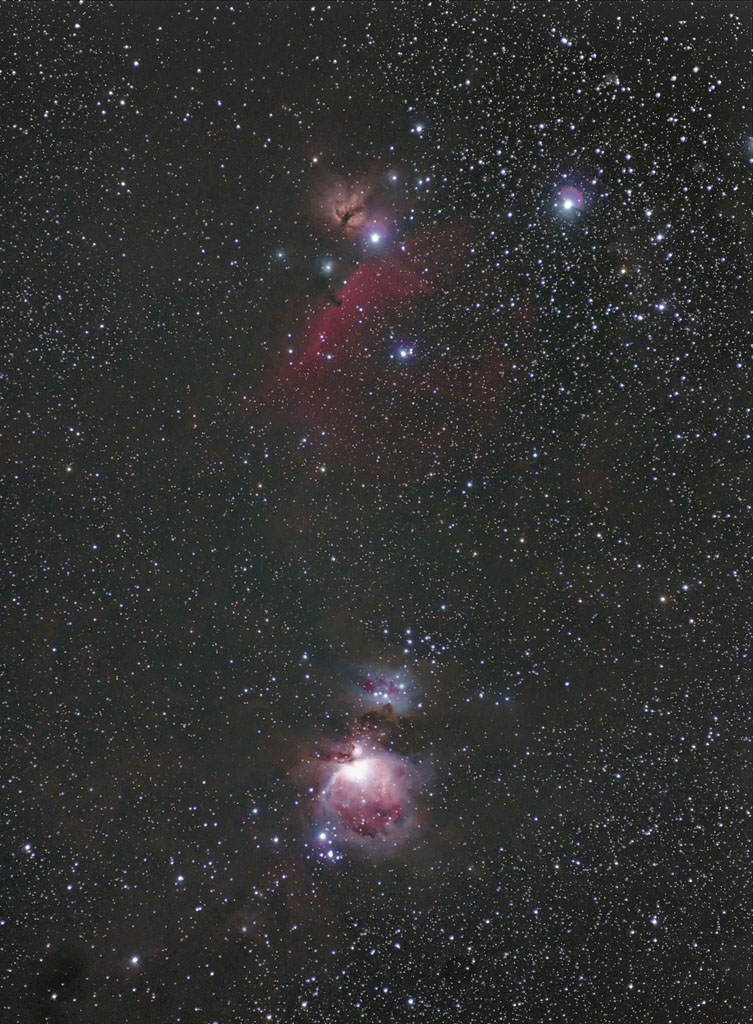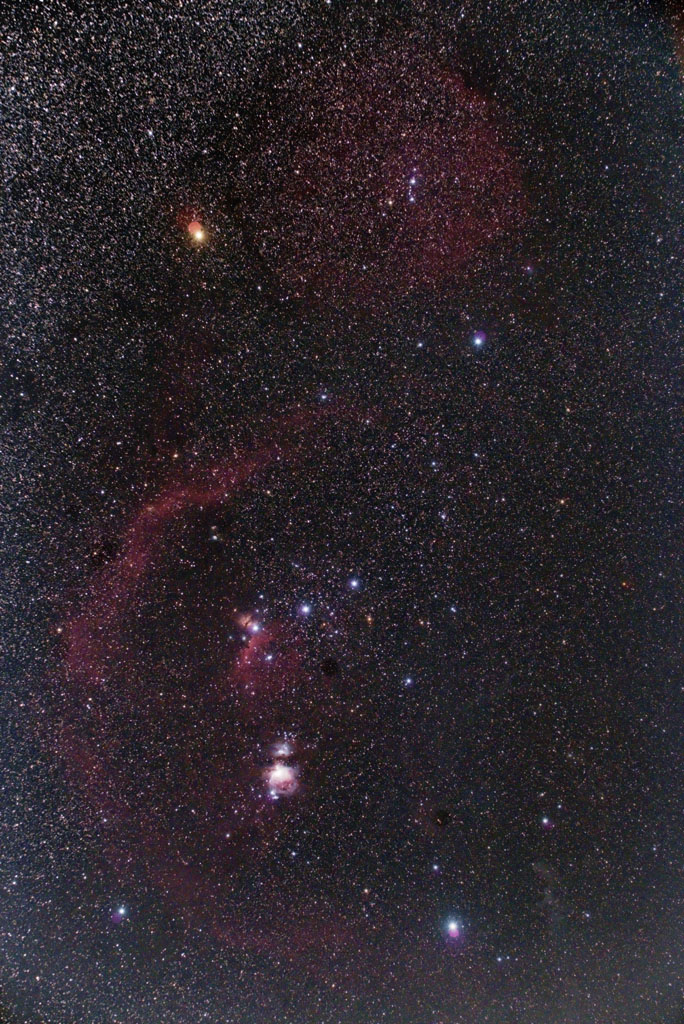I’m back from a short vacation in southern California, most of which was unrelated to astronomy, but we spent a couple of days in Borrego Springs, which is a designated Dark Sky Community. It’s also in the middle of the Anza-Borrego Desert State Park, which recently became a Dark Sky Park. Using what is called a Sky Quality Meter (I call it a “dark meter” – sort of the opposite of a light meter) I got readings of 21.1 to 21.3 around town. That’s close to the darkness at most of the dark sky sites I go to in the Summer. It’s pointless to go to such places around here in the Winter because even if it’s not cloudy it soon will be.
Borrego Springs is largely a place people go for the Winter, as it is much too hot in the Summer. Mountains to the west of town rise over 3,000 feet, and as I drove up the steep, winding rode one night the temperature dropped from a pleasant 50F in town to a bone-chilling 23F near the top.
But while it was warm, I attempted to capture some astro-photos from near downtown Borrego Springs. In addition to some very annoying local lights, the Moon was out, although a fairly thin crescent. I had brought with me just a Canon 6D DSLR, a 70-200mm zoom lens, and an iOptron SkyTracker mount. The SkyTracker is a quite primitive motorized device that can be easily carried to a site like this. It can’t compete with a decent equatorial mount, but for relatively wide-angle shots like this (and limiting the exposures to just 30 seconds) it does a pretty good job.
In the above image you can see (from top to bottom) the Flame, Horsehead, Running Man, and Orion Nebulae. This was shot at 200mm focal length and cropped to an equivalent of perhaps 400mm. It’s just 20 exposures of 30 seconds each.
I then set the lens at 70mm to capture most of the Orion Constellation:
In this image all of the nebulae in the first image are in the lower half (and much smaller). The faint red loop on the lower left is Barnard’s Loop, and is about 17 degrees wide. The faint red blob at center top is the Angelfish Nebula. And in the lower right corner you can just barely make out part of the Witch Head Nebula in blue. These 3 objects are all very dim.
I had some difficulty with both of these shots – mostly because I’m out of practice with using the DSLR and messed up a couple of things. So they are not great images, but pretty good examples of what can be done with simple equipment – if you are lucky enough to live in a place with dark skies. We should all be so lucky!

